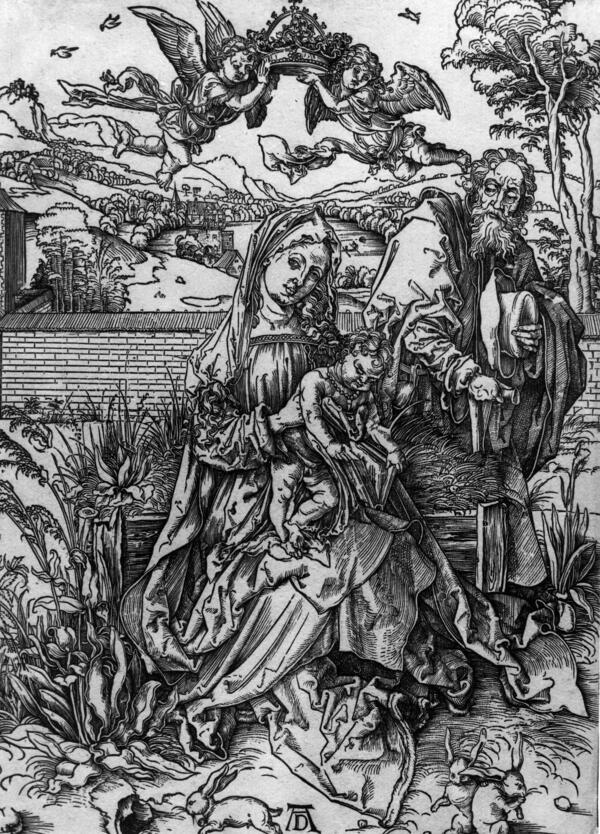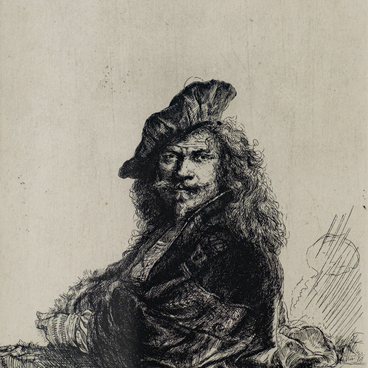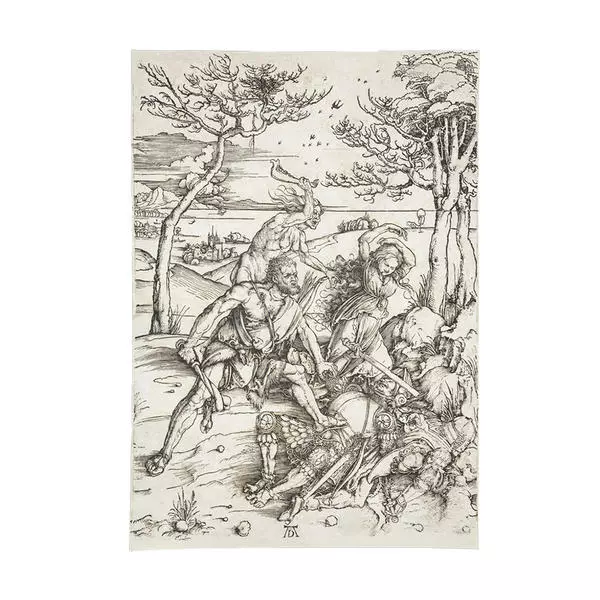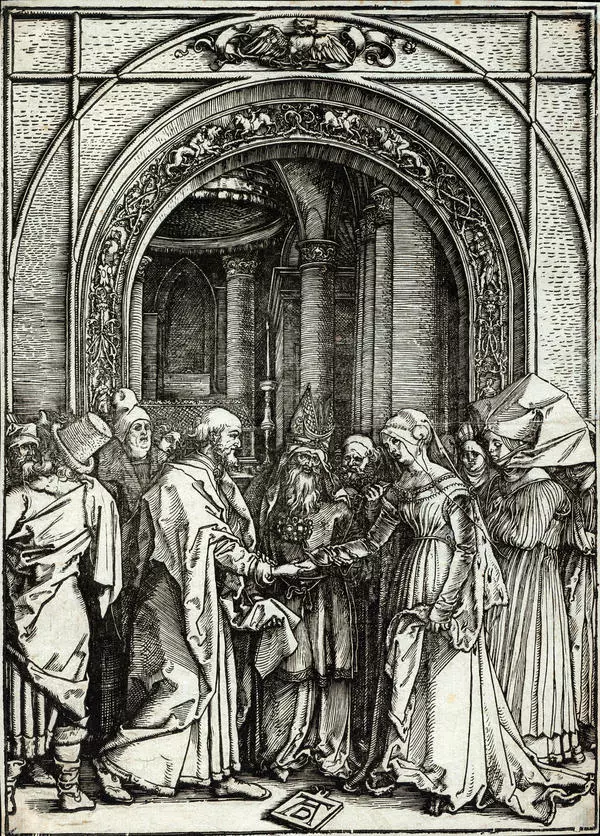The collection of the Sakha Republic National Art Museum includes the work of the great German painter, draftsman, engraver and art theorist of the Renaissance Albrecht Dürer — “The Holy Family with Three Hares.”
The engraving depicts the Holy Family and the scene of the Coronation of Saint Mary. The family settled down to rest inside a closed courtyard under the open sky. The garden is separated from the surrounding landscape by a wall. The Mother of God, in long clothes and with a veil on Her head and Her hair cascading down to Her shoulders, sits on a bench, holding the Christ Child with both hands. The Child stands on Her lap and opens a large book of Holy Scripture. Joseph stands next to Them with a hat and a staff in his hands, admiring the Baby. Two flying angels with a magnificent crown in their hands hover above the head of the Mother of God. At the bottom in the foreground are three hares, after which this “Holy Family” got its name. The abundance of drawn textures in the richly detailed landscape shows how the early Dürer mastered the art of engraving.
Dürer was the first artist in Germany to study mathematics and mechanics, construction and fortification. The richness of imagination, the depth of creative thought, the talent and skill of the artist were most fully manifested in the field of printmaking. Having mastered his first artistic skills in the family of his father, a gold and silversmith, and having learned the secrets of painting and woodcut art from the largest Nuremberg artist Michael Wolgemut, Dürer retained his lifelong attachment to various types of art: painting, graphics, printmaking on wood and copper.
Already the first woodcuts by Dürer differed from
everything that had been created before, in particular from the simplified
decorative woodcuts of the 15th century. In his works, the artist not only made
the plot and the composition more complex, and significantly expanded the
expressive possibilities of woodcut technique. He abandoned the polychromy of
German woodcut, achieving greater power and picturesque effect by simply using
the effects of light and shadow, and intensified the language of lines. Dürer
gave the forms more realism, introduced space and a lot of specific details into
the engravings, giving them the character of a detailed story. This is
evidenced by the woodcut “The Holy Family with Three Hares” from the museum’s
collection, which precedes the famous series of large woodcuts illustrating the
most important moments of the Apocalypse of St. John the Theologian.







